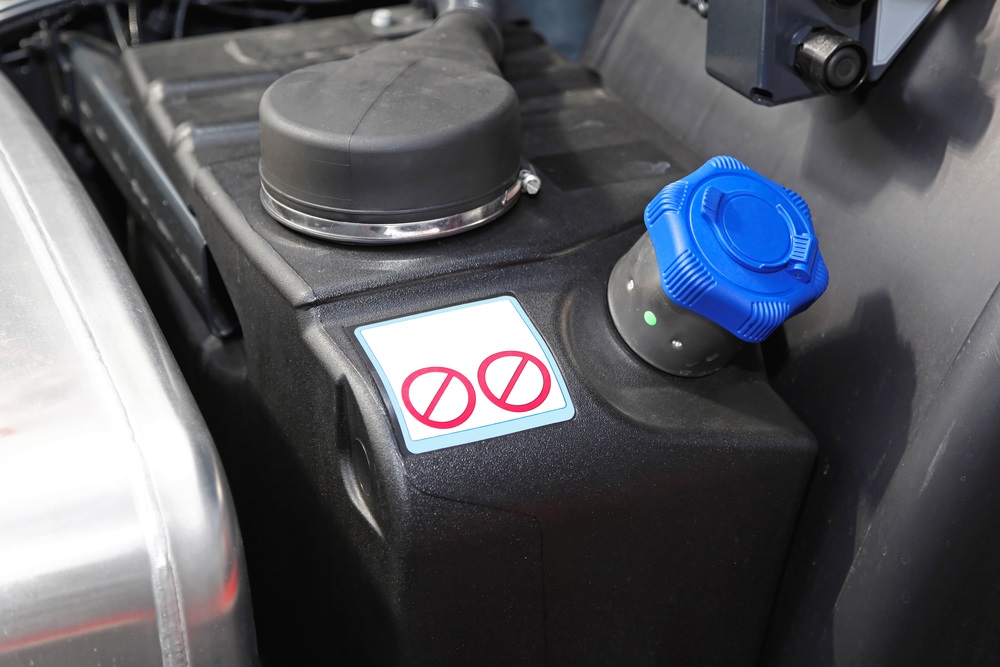Monitoring DEF levels and topping off your tank is key to keeping your diesel vehicle running smoothly. DEF, or Diesel Exhaust Fluid, helps reduce harmful emissions, so maintaining it is essential for both performance and the environment.
With a little attention and effort, you can easily check and refill your DEF, avoiding costly repairs or engine shutdowns. Let’s dive into how to keep your DEF levels in check and your vehicle performing at its best.
Introduction to DEF and Its Importance
Diesel Exhaust Fluid (DEF) is a crucial part of keeping your diesel vehicle running clean and efficient. If you drive a diesel-powered vehicle, you’ve likely heard about DEF. But what exactly is it, and why is it so important?
What is DEF?
DEF is a non-toxic solution made up of 32.5% urea and 67.5% deionized water. It’s injected into the exhaust system of diesel engines to help reduce harmful nitrogen oxide (NOx) emissions. When DEF mixes with exhaust gases, it breaks down the NOx into harmless nitrogen and water vapor, which is then released into the air.
Why is DEF Important?
The main purpose of DEF is to make diesel engines more environmentally friendly. Without it, diesel engines would release high levels of harmful pollutants that can contribute to air pollution. DEF helps your vehicle meet strict environmental standards, ensuring it runs cleaner and more efficiently.
Also, DEF plays a role in maintaining the overall performance of your vehicle. Running low on DEF can trigger warning lights on your dashboard, and in some cases, your engine may shut down to prevent further emissions damage. By keeping your DEF levels topped off, you’re protecting both your vehicle’s health and the planet’s.
How to Check Your DEF Levels
Checking your DEF levels is simple and important to ensure your diesel vehicle runs smoothly. It’s a task you can do quickly, without needing any special skills or tools. Here’s how you can easily monitor your DEF levels.
1. Look for the DEF Gauge
Most modern diesel vehicles are equipped with a DEF gauge on the dashboard, just like a fuel gauge. This gauge shows how much DEF is in your tank and will alert you when it’s running low. When the DEF gauge shows a warning light or a “low DEF” message, it’s time to refill. Keep an eye on the gauge during your drive to avoid running out unexpectedly.
2. Manual Check of the DEF Tank
If your vehicle doesn’t have a digital DEF gauge or if you want to double-check, you can manually inspect the DEF tank. Usually, the DEF tank is located near the diesel fuel tank, and it has a separate cap for easy access. In some vehicles, you may need to open the hood or remove a panel to access it.
3. Using DEF Level Sensors
Some vehicles have DEF level sensors that show the exact amount of DEF in the tank. These sensors are often more accurate and provide real-time readings, helping you avoid guessing when it’s time to top off. If your vehicle has this feature, check the user manual for specific instructions on how to read the sensor.
4. Checking the Warning System
Your vehicle will often display a warning on the dashboard when DEF is running low. Depending on your make and model, it might flash a warning light or even provide a countdown. Don’t ignore these warnings, topping off your DEF before it gets too low is important to prevent engine shutdown or poor performance.
How to Top Off Your DEF Tank
Topping off your DEF tank is a quick and easy process that helps keep your diesel engine running clean and efficient. Here’s a step-by-step guide to make sure you’re doing it right.
1. Locate the DEF Tank and Cap
The first step is to find your DEF tank. In most vehicles, the DEF tank is located near the diesel fuel tank, often with a separate cap or lid. In some cases, it might be inside the trunk or under the hood. Consult your vehicle’s manual if you’re unsure where it’s located.
2. Check the DEF Fluid Quality
Before topping off, make sure the DEF fluid you’re using is clean and certified. DEF should be clear, colorless, and free from contaminants. Always choose high-quality DEF that meets the ISO 22241 standard. This ensures your engine’s exhaust system works properly and doesn’t get damaged.
3. Open the DEF Tank Cap
Once you’ve located the DEF tank, unscrew the cap carefully. Be mindful of any warnings on the cap, and avoid spilling the fluid as it can damage vehicle paint or surfaces.
4. Pour in DEF Fluid
Using a funnel, pour the DEF fluid slowly into the tank until it reaches the recommended level. Don’t overfill it! If your vehicle has a DEF gauge, keep an eye on it to avoid spilling. Some DEF containers come with a built-in spout to make pouring cleaner and easier.
5. Seal the Cap and Clean Up
After filling the tank, securely close the DEF cap to prevent leaks or contamination. Clean up any spills right away using a cloth or rag to avoid any damage to your vehicle.
6. Check for Alerts
Once you’ve topped off the DEF, turn on your vehicle and check the dashboard for any warning lights. If the light has gone off, your DEF level is now sufficient. If the light persists, double-check that the cap is on tightly and there are no issues with the DEF tank.
Maintenance Tips for DEF System Longevity
Maintaining your DEF system properly is key to ensuring your diesel vehicle runs smoothly and meets environmental standards. A well-cared-for DEF system not only helps reduce harmful emissions but also keeps your engine healthy and efficient. Here are some simple tips to extend the life of your DEF system.
1. Regularly Inspect the DEF Tank and Components
Periodically check the DEF tank, lines, and injectors for any visible signs of wear, leaks, or damage. Look for any cracks or corrosion, especially around the tank and connections. Early detection of issues can prevent major repairs and keep your DEF system functioning properly.
2. Avoid Contaminating the DEF Fluid
DEF must stay free from contaminants like dirt, oil, or other fluids. When filling up your DEF tank, always use clean equipment such as a funnel or spout. Avoid touching the inside of the DEF cap or tank, as contaminants from your hands can damage the system. Always store DEF in a sealed container to protect it from outside elements.
3. Keep the DEF System at Optimal Temperature
DEF can freeze in temperatures below 12°F (-11°C). If you live in a cold climate, consider parking your vehicle in a garage or using DEF heaters available in some vehicles. Freezing can damage the DEF system, so keeping it in a warm place helps maintain its effectiveness.
4. Top Off Regularly and Don’t Let DEF Run Low
Avoid letting your DEF tank run too low, as driving with low DEF can cause engine performance issues. If your vehicle alerts you that DEF is running low, refill it as soon as possible. Regularly topping off your DEF tank helps keep the system in working order and avoids potential engine shutdowns.
5. Use High-Quality DEF
Not all DEF fluids are created equal. Choose DEF that meets the ISO 22241 standard to ensure the best quality and performance. Using low-quality or non-certified DEF can cause clogging in the system, potentially leading to costly repairs or poor engine performance.
Conclusion
By regularly monitoring and topping off your DEF tank, you’re ensuring better engine performance and cleaner emissions. It’s a simple task that goes a long way in maintaining your vehicle’s health and efficiency. Stay on top of it, and you’ll keep your ride running smoothly.





